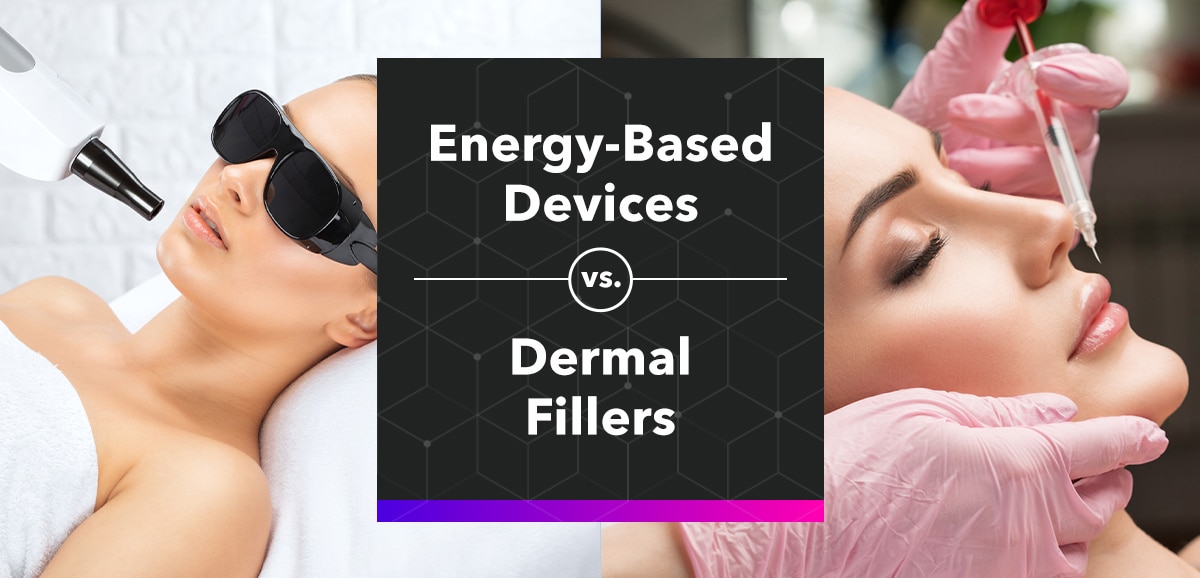Energy-Based Devices vs. Dermal Fillers: The Shifting Landscape in Aesthetic Spending
The competition between energy-based devices (EBD) and dermal fillers is intensifying in the U.S. Aesthetics market. Recent data from Qsight Market View reveals that EBD procedures are closing in on the spending dominance traditionally held by dermal fillers. As of 2023, U.S. Aesthetics patients allocated $3.08 billion to EBD procedures, nearly on par with the $3.18 billion spent on dermal filler injections. This trend reflects a steadily narrowing gap between the two categories.
Sales Trends in 2024: Dermal Fillers Maintain a Lead
Despite this trend toward equilibrium, dermal fillers remain the second-largest non-surgical Aesthetics segment (following neurotoxins). In the recent Q3 2024 Financial Release from AbbVie, it was reported that Juvederm, a leading dermal filler brand, experienced a 10.2% decline compared to the previous year in the U.S. This dip may reflect broader market shifts toward alternative treatments, including energy-based devices (EBD), as patients increasingly seek options with less frequent maintenance and downtime. “An increasing number of patients are moving away from exogenous fillers, opting instead for energy-based devices (EBD) to naturally stimulate their own muscles, collagen, elastin, and hyaluronic acid,” says Dr. Yael Halaas, Double Board-Certified Facial Plastic Surgeon. Additionally, economic pressures and evolving patient preferences could be contributing factors, with consumers exploring diverse treatments in response to rising prices.
By the end of Q3 2024, overall dermal fillers were once again in the lead, generating $2.30 billion in sales for the year to date, compared to $2.13 billion for EBD procedures. The year-end figures will determine whether dermal fillers retain this position, though EBD has shown resilience and steady growth.
Dermal Fillers: Hyaluronic Acid vs. Biostimulatory Injectables
In 2023, total dermal filler sales saw a 7% year-over-year decline, primarily due to a drop in the popular hyaluronic acid fillers, such as Juvederm or Restylane. Hyaluronic acid fillers have seen a consistent dip in sales, decreasing by 11% from the previous year. This has caused hyaluronic acid fillers to continue to fall in their share of total dermal filler spend, from 86% in 2021 to 81% in 2023. Meanwhile, biostimulatory filler, such as Radiesse or Sculptra, are rapidly gaining traction, growing by 11% in 2023 and capturing a larger market share within the dermal filler sector.
Biostimulatory injectable patients have traditionally skewed older than those receiving hyaluronic acid fillers, and this trend has persisted in recent years. In 2024, 77% of biostimulatory injectable patients were Gen X (age 44-59 years old) or Boomers (age 60-78 years old), compared to just 62% for hyaluronic acid filler patients. Gen Z, typically those in their early-to-late-20’s and an emerging and increasingly important demographic for the Aesthetics industry, currently makes up only about 2% of biostimulatory injectable patients, compared to approximately 10% for hyaluronic acid filler patients. This generational distinction underscores how biostimulatory injectables attract more mature patients seeking regenerative, long-term results, while hyaluronic acid fillers appeal more broadly across age groups, especially among younger consumers.
One possible factor in overall consumer preferences between the filler types is the higher cost associated with biostimulatory injectables. According to Qsight Aesthetics Sales Measurement data, the average cost per visit for biostimulatory injectables was approximately $1,280 in 2024, compared to $910 for hyaluronic acid fillers. This price difference reflects the premium nature of biostimulatory injectables and their appeal to a segment of patients seeking longer-lasting results.
Energy-Based Devices: Growth and Key Players
Energy-based devices experienced a modest 3% year-over-year sales decline in 2023—less than the 7% drop seen in dermal fillers. Within this segment, skin rejuvenation and resurfacing devices stood out, posting a 7% growth rate and accounting for just over half of all EBD spending in 2023. Among these devices, Morpheus8 by InMode led the segment in market share, while Sciton’s BBL HERO and HALO devices also achieved top-performing status in 2023. These technologies are gaining popularity for their ability to deliver results across various skin types and concerns, positioning them as high-value options in the non-surgical Aesthetics landscape.
“When consumer spending shifts and discretionary spending tightens, consumers will turn to reliable and consistent treatments like Sciton’s BBL HERO and HEROic. BBL HERO and the newest product, BBL HEROic, produce results after just one treatment and is a game changer for patient’s skin care. We continue to see the positive impact of patients investing in treatments that provide longer term results for their overall skin health” says Aaron Burton, CEO of Sciton.
Looking Forward
The ongoing competition between EBD and dermal fillers highlights a shift in consumer preferences within the Aesthetics market. The gradual rise of EBD procedures, particularly skin rejuvenation and resurfacing, reflects an evolving demand for treatments offering minimal downtime and broad applicability. On the other hand, biostimulatory injectables continue to make significant inroads, appealing to patients willing to invest in premium options for long-term benefits.
As the final quarter of 2024 unfolds, the narrowing gap between energy-based devices (EBD) and dermal fillers signals a pivotal shift in the non-surgical Aesthetics market. Consumers increasingly prioritize treatments that offer long-term benefits, affordability, and natural-looking results—key advantages where EBD technologies excel. By focusing on these priorities, the EBD sector can position itself as both a complementary treatment and a compelling alternative to dermal fillers, driving continued growth and diversification in the evolving Aesthetics market.
